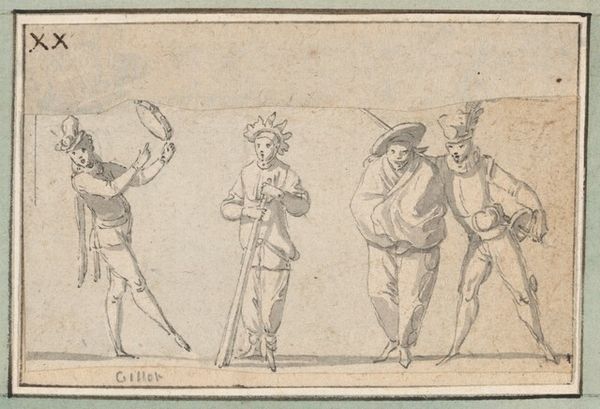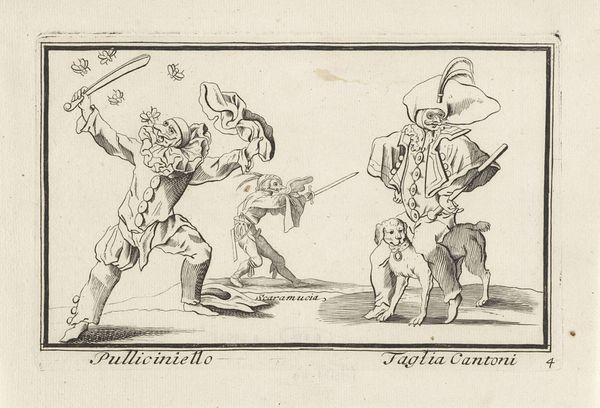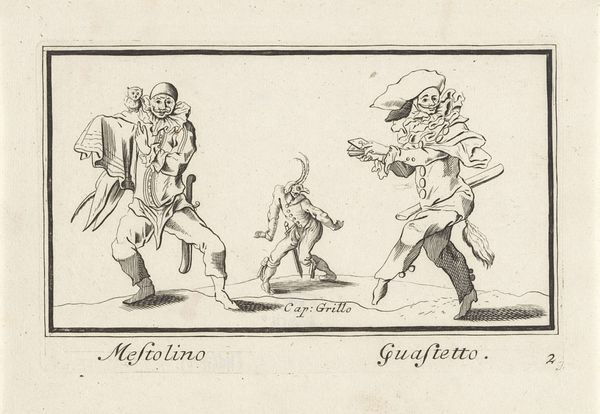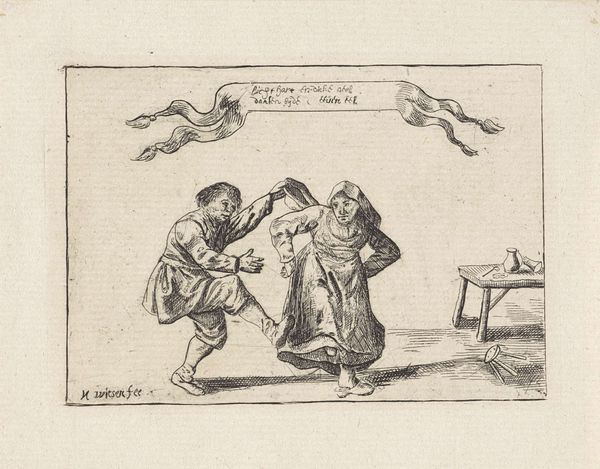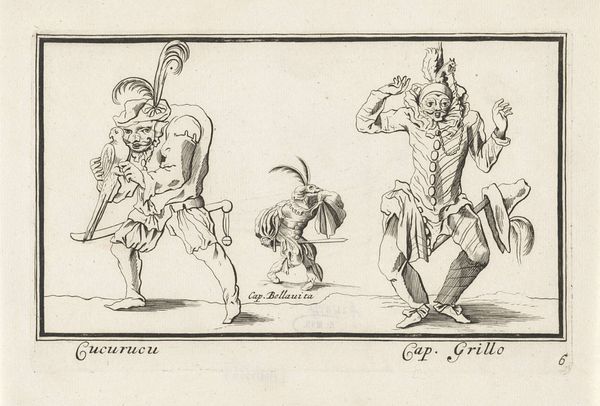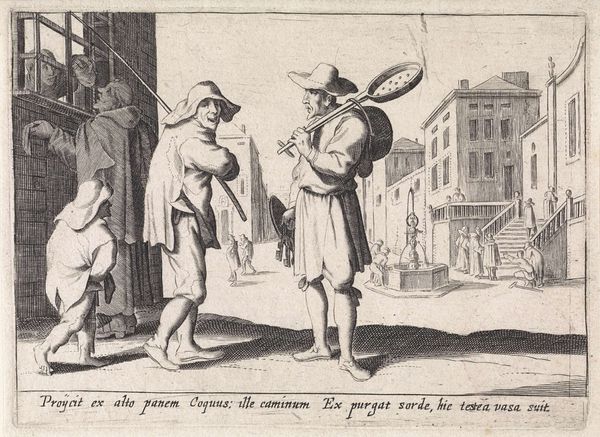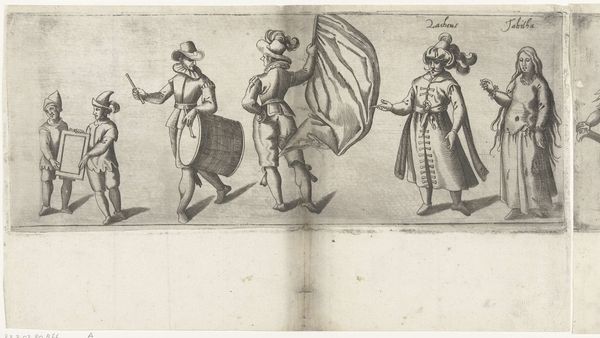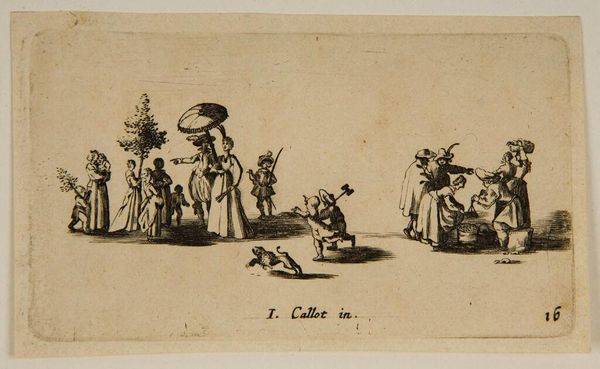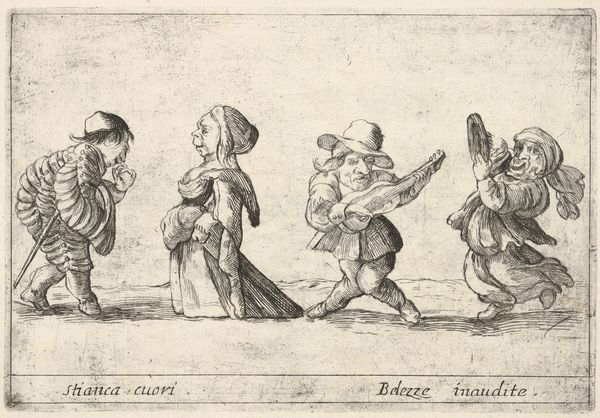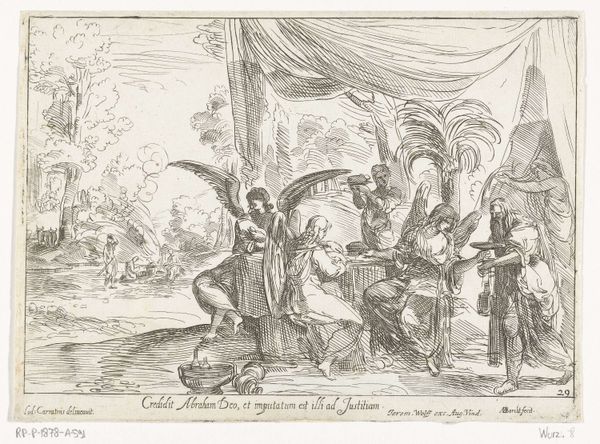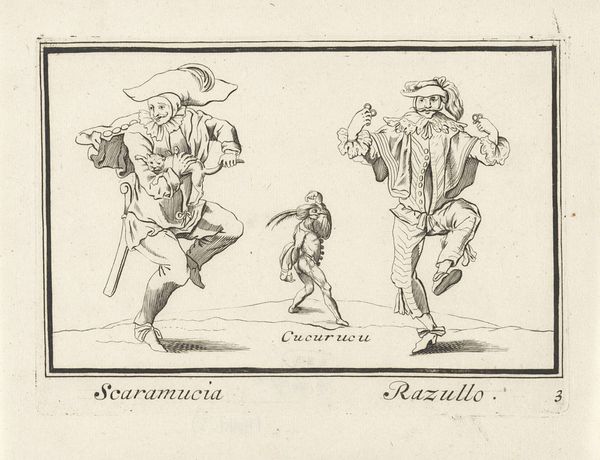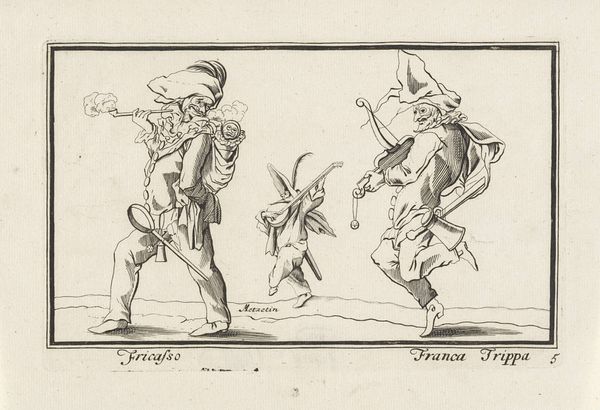
print, engraving
#
comic strip sketch
#
quirky sketch
#
narrative-art
#
baroque
# print
#
caricature
#
sketch book
#
figuration
#
personal sketchbook
#
idea generation sketch
#
sketchwork
#
pen-ink sketch
#
sketchbook drawing
#
storyboard and sketchbook work
#
italian-renaissance
#
sketchbook art
#
engraving
Dimensions: height 126 mm, width 179 mm
Copyright: Rijks Museum: Open Domain
Curator: Isn't this print delightful? It’s by Anthonie de Winter, dating from the late 17th, early 18th century and it’s called “Cap. de la Bande, Ciurlo en Fritellino.” Editor: It’s like stumbling upon a scene mid-performance. Full of lively energy. The two larger characters, especially the one mid-prance, positively leap off the page. What struck me first was its...unapologetic theatricality. Curator: Precisely! De Winter captures figures from the Commedia dell’Arte, specifically Captain Fracassa or "Cap. de la Bande", Ciurlo, and Fritellino using engraving techniques. We get the bluster, the posturing. And of course, there is this play with caricature that seems utterly uninhibited. Editor: The linework is incredible. The detail in their costumes, especially the ruffs and the feathers—it's exquisite, and almost seems to mock the elaborate outfits, pointing to deeper societal layers in these familiar figures. Are these really just caricatures or do these figures act as metaphors for social commentary? Curator: Indeed! Note the scroll held by the Captain reading, “Titulu vs. Stultorum”, roughly translating to "Titles for Fools." The image pokes fun at vanity, pretension, and perhaps intellectual snobbery and also echoes broader humanist thought—embracing human folly with a gentle ribbing. Editor: What do we see beyond these recognizable forms? How does the composition itself direct meaning? The smaller figure tucked between them accentuates the scale and self-importance, yet all are contained within this tidy rectangle. Is it about holding chaos? Curator: In a way, yes. Through meticulous etching, de Winter highlights inherent human foibles but with humor, turning a sharp eye towards human conduct. It reminds us that a mirror—though often unforgiving—can reflect truths wrapped in comedy. It challenges us, ever so slightly, to inspect ourselves, too. Editor: It certainly leaves a resonant afterimage of theatrical humanity. Now when I observe performances and social gatherings, I’ll carry the spirits of Capitan, Ciurlo and Fritellino and be more aware of this "titles of fools."
Comments
No comments
Be the first to comment and join the conversation on the ultimate creative platform.

